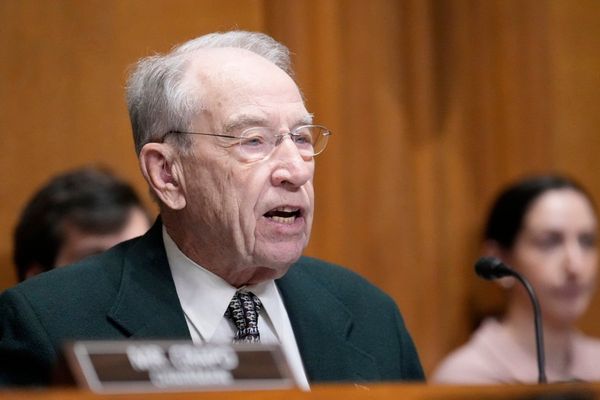The Congress’s party’s election manifesto, the Nyay Patra, has triggered a debate on inequality, concentration of wealth and the measures to address these. The Prime Minister, with his misleading comments on what the Congress manifesto contains, has also managed to provoke a discussion on wealth redistribution. There is ample evidence to show that inequality in India has been rising. The World Inequality database found that in 2022-23, 22.6% of the national income went to the top 1%, the highest ever since 1922. Wealth inequality is even more stark with the top 1% population having 40.1% share in wealth. It is clear that inequality can no longer be ignored and justified as a collateral to growth. The cost of such unequal growth must be interrogated.
As an election issue is welcome
The unfairness of some people and a few corporates doing so well while most of the population continues to struggle for decent employment opportunities is becoming more and more obvious. The logic of trickle down and of supporting ‘wealth creators’ so that more jobs are created and prosperity spreads has failed time and time again not just in India but across the world also. The futility of continuing to depend only on economic growth even at the cost of increasing inequality, for improving the lives of people, is a core political economy question facing countries today. That it is finally becoming an election issue in India must therefore be welcomed, irrespective of what the election outcome in 2024 will be.
The public discussion, especially on social media platforms, has so far mostly been confined to direct redistribution measures of the ‘Tax the rich, subsidise the poor’ nature. These are very relevant in the Indian context. After all, India not only has a low tax-GDP ratio compared to other middle-income countries (India’s tax-GDP ratio is 17% compared to 25% in Brazil) but also a regressive taxation structure, where indirect taxes contribute to almost two-thirds of all tax revenue collection. Furthermore, even direct taxes are not very progressive. For example, the effective tax rate (tax to profit ratio) according to the Receipt Budget 2023-24 was 19.14% for companies that had more than ₹500 crore profit before taxes compared to an effective tax rate of 24.82% for companies in the group of 0-₹1 crore profit.
Welfare spending is low
On the other hand, spending on welfare and the social sector is very low compared to other countries. Public spending on health for instance is still around 1.3% of GDP whereas the National Health Policy (NHP) targets achieving 2.5% of GDP by 2025. Despite COVID-19, we have not seen any such massive increases in health expenditures, and going by the current trend, we will not achieve this target. A number of other major budgetary allocations of the Union Government such as for the Mahatma Gandhi National Rural Employment Guarantee Act (MGNREGA), education, budget for children, show a decline as a proportion of the total expenditure or of GDP. Hence, improving revenue mobilisation in a progressive manner while also increasing spending on areas that directly affect lives of the poor is very much a relevant issue and needs to be paid attention to.
However, addressing inequality is also about questioning the nature of growth itself. In a situation where the major source of livelihood for people is through employment, how far can growth that does not generate jobs contribute to development? The kind of growth we have experienced recently has been one that has been accompanied by joblessness as witnessed by a declining employment elasticity of output. Further, there is a rise in profit shares and stagnant real wages. The discussion, therefore, has to be on generating employment — not distress self-employment but decent jobs with adequate remuneration. For this, we have to focus attention on more equitable growth where the purchasing power of people also increases. Governments can play a role in this by spending on programmes such as the NREGA and the Public Distribution System. Cash transfer schemes such as the Mahalakshmi scheme proposed in the Congress manifesto can also contribute to this.
Job creation
At the same time, governments can also contribute to directly creating jobs by filling up all existing vacancies and expanding much needed public services in health, education, nutrition and social security. The quality of jobs, such as of anganwadi workers, accredited social health activists and other frontline workers, also need to be improved with adequate wages and improved work conditions. These direct job creation efforts will not only create employment opportunities for many, especially women, but also contribute to improving human development outcomes and reduce the burden of unpaid care work on women and free them up for other employment. Further, they can also address the inequality in opportunities and the intergenerational inequality that gets perpetuated due to the unequal access to services such as pre-school education and nutrition during childhood.
An employment-centered growth pattern will be one where government policy focuses on supporting small and medium enterprises that are more labour-intensive in nature, promoting skill training and overall human capital (health and education) along with enabling women to participate in the labour market through measures such as maternity entitlements, childcare, transportation, safe and affordable accommodation and so on. It is only when we address the employment issue that we can address inequality in earnest. On the other hand, as long as growth is of the nature where profits for few is the priority, the employment issue is also likely to remain unaddressed.
Dipa Sinha is a development economist







